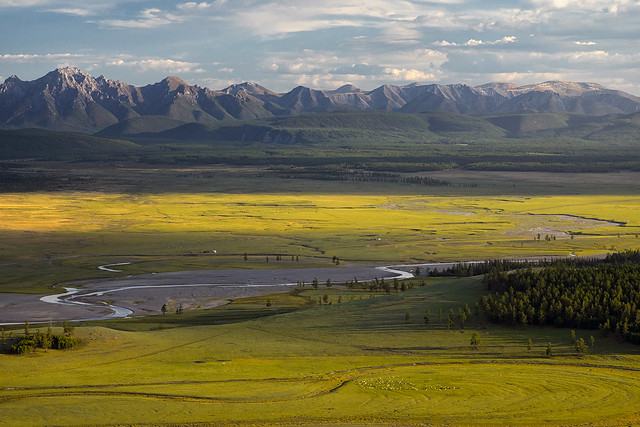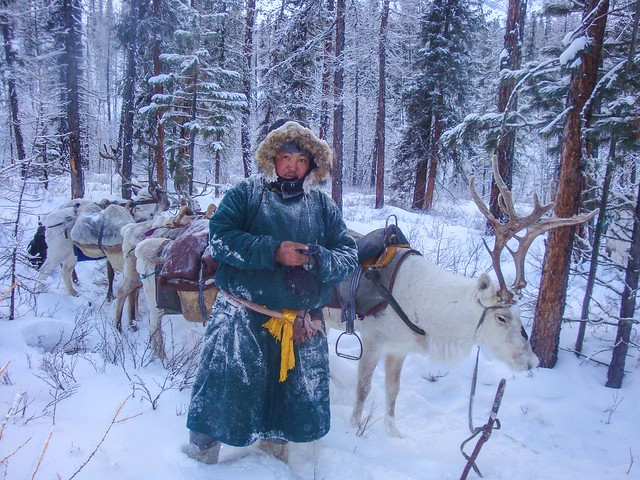A visit with Tumursukh Jal, director of one of the largest protected areas in northern Asia
A few months ago, when Mongolian national park director Tumursukh Jal was on an official visit to the Grand Canyon, one of his hosts asked a simple question: “How many national parks do you guys have there in your home country?” When Tumursukh mentioned there were 99 of them, his US colleagues seemed a bit nonplussed. “That many, really?”
Sensitive to his audience’s surprise, Tumursukh* went on to say: “Well, it seems to me that, when you Americans think of national parks, you normally conjure up a picture of one of your own amazing areas, like Yellowstone or Yosemite, or the Grand Canyon here. But you know, my friends, the rest of the world is catching up with you. Before long, we’ll have just as many national parks in Mongolia as you do here.”
Although it might take a few decades for Mongolia to surpass the United States in the sheer number of its national parks, in one way it already has outstripped America. The Mongolian parks now cover nearly seventy million acres, or almost one fifth of the entire country. By comparison, all the American national parks and monuments put together protect only 14 percent of US lands. And unlike America, where the pace of change is slower, there are new parks being created virtually every year in Mongolia. (Read more about the need for new national parks in the United States in the Journal feature “Room for More.”)
 Photo by Kerik Kouklis, courtesy of the Mongol Ecology CenterThe Darhad Valley, located in the Ulaan Taiga parks that Tumursukh manages.
Photo by Kerik Kouklis, courtesy of the Mongol Ecology CenterThe Darhad Valley, located in the Ulaan Taiga parks that Tumursukh manages.
The issue that worries Tumursukh is not that Mongolia lacks enough national parks. Instead, there is almost too much territory to protect – and certainly not enough park rangers and other resources to do the job correctly. This seems to be a problem facing many of the former Soviet bloc countries. Over the last 25 years, countries like Mongolia and Russia have been creating new parks at near-record rates. But now they need to catch up, and recruit qualified rangers and train them for the rigorous work of managing these parks. And to do this, they often need to reach out for advice and support from their western counterparts.
In fact, this was one of the objectives of Tumursukh’s recent visit to America’s parks. At each official meeting, he was quick to point out that the three parks that are under his command cover over 3 million acres – or an area that is around four times larger than California’s Yosemite National Park. But whereas the permanent staff at Yosemite hovers around 800 full-time employees, the three parks that Tumursukh manages only have 30 staff members total. So it’s easy to understand the challenges that the Mongolian park rangers face every day as they try to patrol such massive landscapes with such small numbers of staff.
Tumursukh is also quick to point out that they are not just randomly creating new national parks in Mongolia. Each of the new protected areas contains either a unique landscape (like the Gobi Desert), or was formed to preserve one of the country’s several engendered species and their habitats. The Ulaan Taiga Parks that Tumursukh manages lie on the edge of several mountain ranges, which are the last strongholds of the famed Snow Leopard, as well as the Argali Mountain Sheep and the Ibex. The Argali sheep (Ovis ammon) are a sight to behold; their horns weigh an average of 50 pounds, making them the largest of all the big-horned sheep. Also listed on the IUCN Red List, the Ibex (Capra sibirica) is no less impressive. Adult male goats will often have horns more than four feet long.
The streams in Tumursukh’s parks are also home to the largest (and most threatened) trout species in the world. And there is another, more familiar animal that takes shelter in these parks: the northern Reindeer. With only a few left in the wild here, many more have been domesticated by local nomadic families. When Tumursukh was in Yosemite, he showed a somewhat humorous video of himself riding one of these reindeer to patrol his park. He says he prefers this mode of transport to noisome snowmobiles, which the Ministry of Nature, Environment and Tourism has offered to purchase for the park. (You can view this video on the website of Mongolia’s leading environmental NGO, the Mongol Ecology Center, a group that Earth Island helped spawn some half-dozen years ago.)
During his trip to the US, Tumursukh left the distinct impression with American park directors and rangers that he is very confident in his work. This positive outlook, however, belies a recent tragedy in Tumursukh’s life, one that is not uncommon in those countries in the world like Mongolia that are trying to fight against industrial development.
This tragedy struck at the heart of what Tumursukh and his colleagues are trying to do in the steppe-lands of northern Asia. It started in the spring of 2014, when Tumursukh’s activist son, Sumbe Jal, was stabbed by assailants allegedly affiliated with the gold mines that Sumbe was battling near Mongolia’s border with China. These assailants were never apprehended.
 Photo by Unudelgerekh Batkhuu, Mongol Ecology CenterTumursukh, who manages three parks covering more than 3 million acres in Mongolia, following a park patrol.
Photo by Unudelgerekh Batkhuu, Mongol Ecology CenterTumursukh, who manages three parks covering more than 3 million acres in Mongolia, following a park patrol.
Unfazed by this first attack, Sumbe continued in his quest to create a new national park in the gold-rich Tost Mountain area, one of the last Snow Leopard habitats in the world. Once again, however, several masked men confronted and stabbed Sumbe, yet were unsuccessful in their attempt to extinguish Sumbe’s life and spirit.
In an effort to recover from these attacks, Sumbe retreated to his father’s homeland near the Ulaan Taiga Park in northern Mongolia. This time he was tracked down by his pro-development enemies; and in November of last year, Sumbe’s body was found on the main road that leads back to his favorite Gobi Desert region.
Even though Tumursukh and his family were numb with grief following this loss, Tumursukh did not cancel his spring trip to America. Nor did he stray from his determination to continue in his son’s footsteps and protect his native lands from development.
At the time of Tumursukh’s visit to America in March, the Mongolian government was debating the creation of a Tost Mountain National Park. This new park would effectively nullify all the mining permits that had previously been issued in the region, and bring to fruition Sumbe’s dream. However, the fate of this new national park is still uncertain – there are many in the government who likely fear standing up to mining interests in Mongolia. This same fear probably influenced the decision of local police to rule Sumbe’s death as a suicide, a rather dubious ruling given the previous violence against him.
Many of Tumursukh’s friends and colleagues believe that justice might never be served in the case of his murder. But perhaps, if the Tost Mountains do become the latest in a series of new national parks in Mongolia, some form of vindication of Sumbe’s life and efforts will come to pass.
We should note that the lands that Sumbe sought to protect from development – as well as the ones that his father is currently struggling to protect further north as a park manager – are all essential parts of a much bigger eco-system. This system spreads from the headwaters of Tumursukh’s mountain parks all the way down into the Lake Baikal watershed of Russia, and further onward to the Arctic Ocean, comprising one of the world’s largest watersheds. And at many points along its waterways, the surrounding lands are still relatively pristine and abundant with wildlife.
The question now is whether the likes of Tumursukh and Sumbe will prevail in keeping the upper reaches of this watershed relatively unspoiled by human development. The question also is what the rest of the world can do to support these brave men.
*Note: In Mongolia, it is customary to address people by their first names only.








0 comments:
Post a Comment